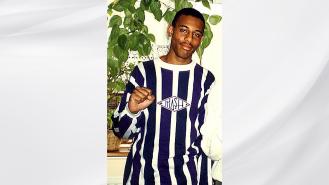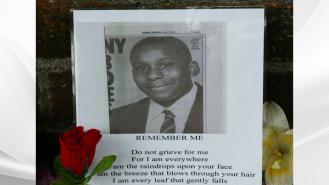
Dr David Holmes on the crimes of The Crossbow Cannibal and The Sketchbook Killer
Dr. David Holmes became a Psychologist in 1985 and gained his Doctorate in 1994, specialising in Clinical and Forensic Psychology. He founded and is director of the internationally recognised Forensic Research Group and has published many academic books and papers, including the first comprehensive text on Abnormal, Clinical and Forensic Psychology in 2010.
Dr. Holmes has graced many pages of the popular press from the Independent to Glamour Magazine in his quest to bring knowledge and understanding to those with little access to or interest in academic texts. He has been a ‘media psychologist’ on over 1000 TV and Radio broadcasts and is therefore as familiar with the thinking behind those populating the small screen as the thoughts of serious offenders.
Here, Dr. Holmes shares his insight into forensic psychology concerning the crimes committed by Neil Entwistle, Danilo Restivo, Michael Ross and John Sweeney.
What do you think motivated Neil Entwistle to shoot his wife and daughter?
For Entwistle, his wife and child were mere components of a fabricated ‘perfect marriage’ he had created. As the computer enhanced narcissistic image of a perfect life fell apart due to his not understanding the emotional realities of family life, his wife and child were no longer needed. There was little true feeling for his family when alive or during their killing. Entwistle had also created a very different sexually sordid image for himself online.
What influence do you think that publicity surrounding the case had on Neil Entwistle’s trial?
Crimes involving the killing of innocents, especially children, attract prejudicial publicity that can seep through to and possibly influence those involved in the trial. This is particularly important for jurors, who may be deliberately isolated from the media by the court.
Elliot would certainly wish that the lengthy phone call by Entwistle to a police officer could be excluded as within this the killer contradicted himself, undermining his defence case. However, to exclude this and the evidence uncovered by a police search that did not have a full warrant, would be to blatantly use technicalities to undermine justice in a serious crime.
Do you think that Professor Christopher Cordess’ claims that Neil Entwistle suffered from Asperger’s syndrome might help explain his actions and if so should his case be re-examined?
Yes, the narcissistic aloofness of Entwistle along with his inability to understand the emotional side of life points to a degree of Asperger’s syndrome. This is evident in his skill in the use of the internet but poor planning and lack of emotional sense in concocting his story for the court. The lack of empathy in such a disorder would enable the degree of cold dispassionate callousness in the killing but would not excuse it. There is no cure for the disorder and it would not change the fact that Entwistle deliberately killed his wife and child in clear consciousness.
What do you think motivated Michael Ross to murder Shamsuddin Mahmood in an Indian restaurant in the Orkney Islands on 2 June 1994?
Racism would be the reason for the selection of the specific victim and a cold dispassionate fascination with military training and precision would dictate the rationale and method of killing. However, a psychopathic sense of power and control over others mixed with the close-knit, closed minds of the small community provided the true motivation.
There is a strong need in some to totally control their environment or territory. With the addition of military training and obsession with weaponry that sense of control is high. Such military readiness without a true enemy or purpose can lead to the creation of a false enemy or scapegoat for any dissatisfaction. In such situations pressure from like-minded others often precipitates younger members of such groups to take rash action as with Ross.
There are personality tests for recruitment selection. However, there is a paradox here, in that the kinds of individuals attracted to the job of killing other human beings are by definition going to include those with insensitive and even dangerous traits. Eliminating all but the most dangerous psychopathic individuals would damage recruitment. The hope is that rigorous military training will discipline otherwise dangerous individuals. This said, training people to kill then placing them in non-combat situations can lead to the frustration and purposelessness that can lead to tragedy.
Danilo Restivo (aka The Haircut Killer) has been described as a sadistic fetishist – what are the traits that make him so?
Restivo gained sexual arousal and satisfaction from inanimate objects which is heightened by sadistic acts of cruelty or violence. Sadistic fetishism can lead to the most bizarre and horrific murder scenes ever witnessed. Some elements of this can be seen with Restivo, who also had limited emotional intelligence and lacked empathy, which is a dangerous combination.
Restivo had women’s hair as his fetishistic object. He probably cut and kept more than we are aware of. He also had a sadistic fetish for cutting people whether this was hair or living body parts, especially sexual parts, driven by sexual arousal or satisfaction he derived from doing this.
With Restivo’s arrest in Italy as a teenager, the early suspicion of his involvement in Heather Barnett’s murder, the police surveillance and his being picked at an ID parade why did it take so long for authorities to get their man?
Restivo’s father had a great deal of influence in the local area of Italy and it was thus difficult for police to oppose him to carry out their investigation. This influence and power would also make it difficult to gather evidence or witnesses. Restivo himself tended to provide alibis that were technically possible, but in a common sense or emotional way were very unlikely.
John Sweeney (aka The Sketchbook Killer) produced several pieces of art which have been analysed for his case. What characteristics of his work indicate his violent inclinations?
Most of Sweeney’s ‘art’ and ‘poems’ depict butchery and particularly misogynistic violence. He produced these as mementoes of his killings as others keep trophies from their achievements. Scenes of dismemberment and other bloody content are tied to specific killings or events known or unknown to the investigation.
Why do murderers like John Sweeney (The Sketchbook Killer) and Stephen Griffiths (Crossbow Cannibal) create pseudonyms – do they live their fantasies through their alter egos or is it a way to distance themselves from their crimes?
Both Sweeney and Griffiths had self-styled pseudonyms as a means of glorifying their killing careers. There is no remorse or guilt in either case, just a macabre pride in their heated callous violence on others seeking notoriety.
Sweeney was a carpenter by trade and psychopathically treated women in the same way as the wood he worked with in their relationship and killing. This drawing is a reminder for Sweeney of a particular experience of butchery and killing. Sweeney was forensically aware and could have been making his victims anonymous, but his overriding motive was hatred of women, aided by his carpentering skills.
Do you think the clues that Sweeney gave away through his pictures and poetry were sub-consciously his way of confessing or do you think it was purely his self-gratification?
Sweeney produced ‘art’ as self-glorification but had a psychopathic-borderline personality being callous and explosive. He probably gained stimulation and excitement from making his crimes blatant. Some killers such as Sweeney and Griffiths consider getting caught just a matter of time and will sow seeds in advance to gain as much notoriety as possible. Many of his drawings are individual confessions and there is little symbolism in them, they are all horrifically graphic and forensically explicit, but would not stand as evidence.










